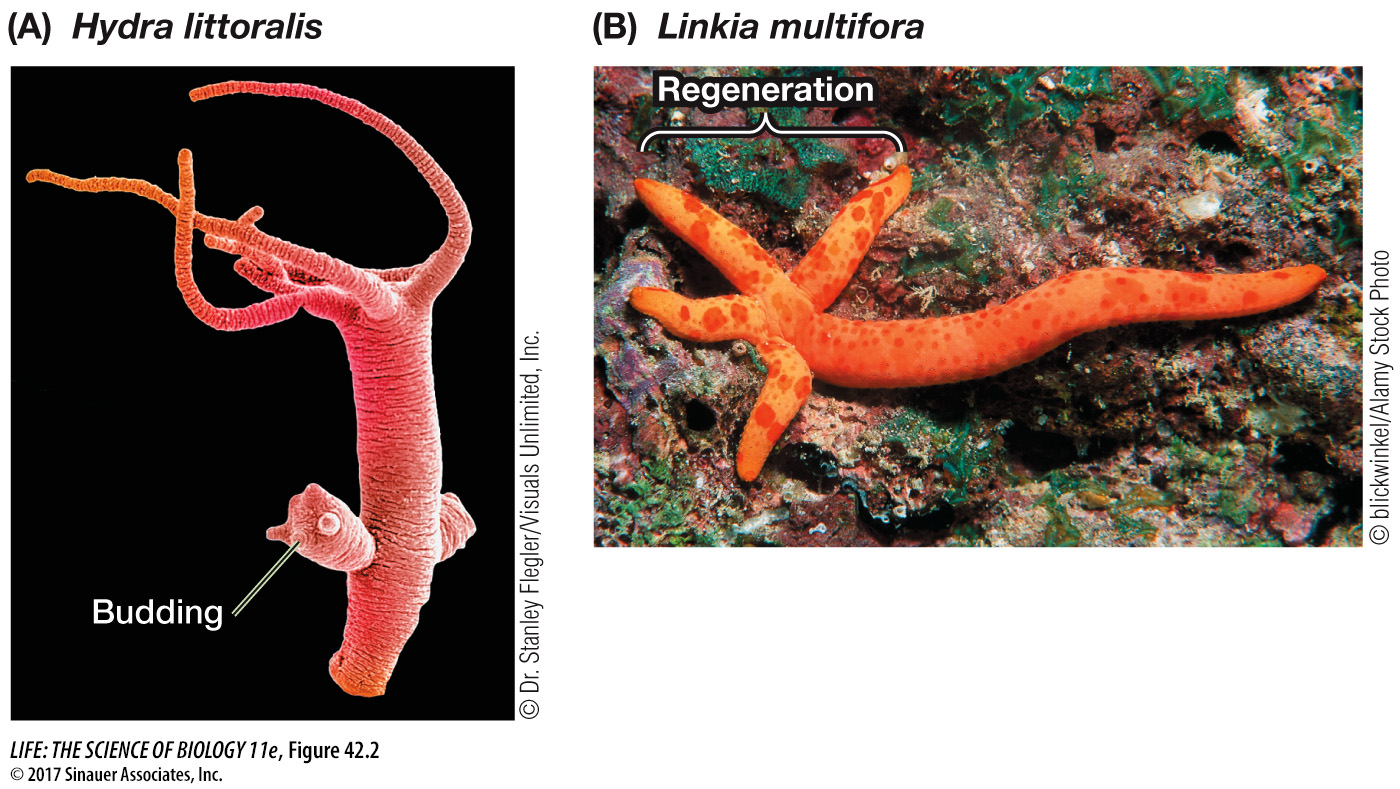Budding and regeneration produce new individuals by mitosis
Many simple multicellular animals produce offspring by budding. New individuals form as outgrowths or buds from the bodies of older animals. A bud grows by mitotic cell division, and the cells differentiate before the bud breaks away from the parent (Figure 42.2A). The bud is genetically identical to the parent, and it may grow as large as the parent before it becomes independent.

Regeneration is usually thought of as the replacement of damaged tissues or lost limbs, but in some cases pieces of an organism can regenerate complete individuals. Echinoderms, for example, have remarkable abilities to regenerate. If sea stars are cut into pieces, each piece that includes an arm and a portion of the central disc can grow into a new animal (Figure 42.2B). In the early 1900s oyster fishermen in Narragansett Bay tried to eliminate the sea stars that were preying on their oysters. Whenever they encountered sea stars, they cut them up with their knives and threw them back into the water. As a result, the sea star population increased explosively. A variant of regeneration called fission involves the animal splitting in half with each half growing into a whole individual. An example is sea anemones.
Regeneration can occur when an animal is broken by an outside force such as wave action in the intertidal zone. In some cases, breakage occurs in the absence of external forces. Some species of segmented marine worms develop segments with rudimentary heads bearing sensory organs. The segments then break apart and each one forms a new worm.